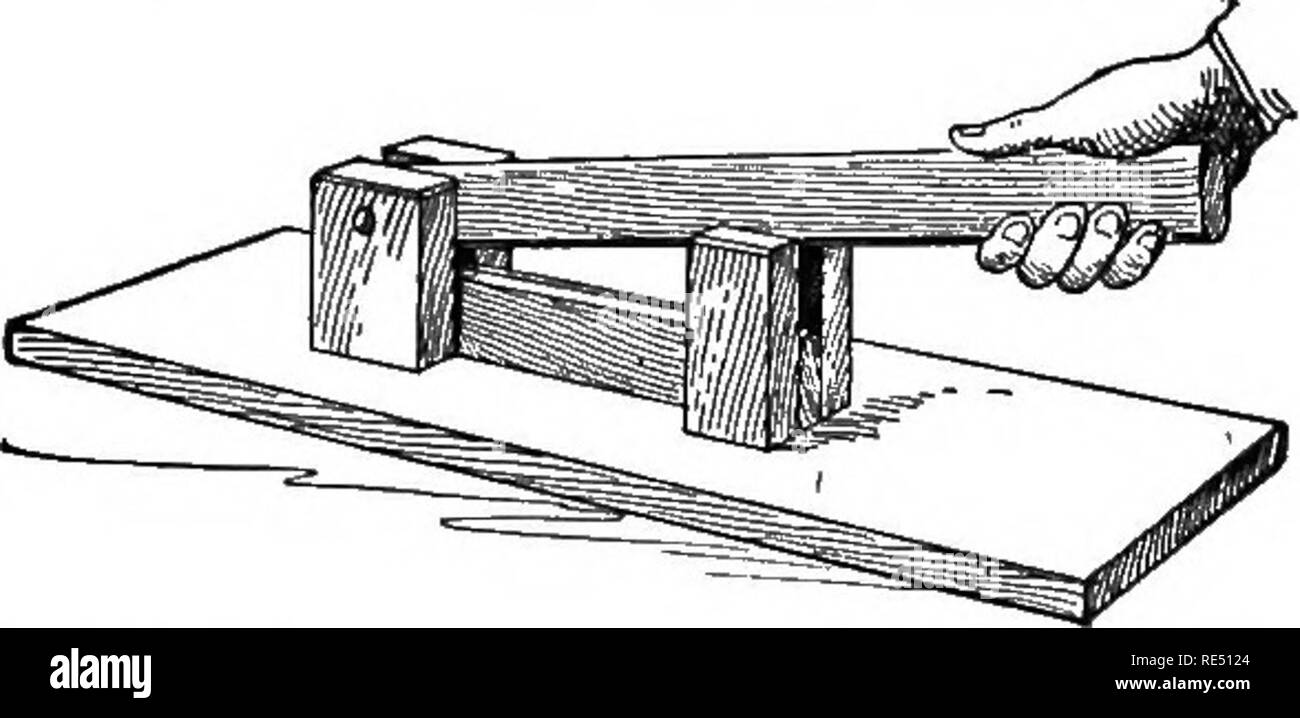. The national standard squab book. Pigeons. SUPPLEMENT 115 not be sharp so as to cut the flesh, but should be rounding, and slightly flat at the points of contact. The base-board is made of three-quarters or one-inch lumber, twenty inches long and seven inches wide. The upper arm (or lever) is of half-inch stock, one and three-quarters. inches wide and fifteen inches long. The lower arm is of half-inch stock one and three- quarters inches wide and eight and one-half inches long. The two upright pieces in front, nearest the hand of the operator, are each of seven-eighths or inch stock, one and

Image details
Contributor:
The Book Worm / Alamy Stock PhotoImage ID:
RE5124File size:
7.2 MB (228.6 KB Compressed download)Releases:
Model - no | Property - noDo I need a release?Dimensions:
2275 x 1099 px | 38.5 x 18.6 cm | 15.2 x 7.3 inches | 150dpiMore information:
This image is a public domain image, which means either that copyright has expired in the image or the copyright holder has waived their copyright. Alamy charges you a fee for access to the high resolution copy of the image.
This image could have imperfections as it’s either historical or reportage.
. The national standard squab book. Pigeons. SUPPLEMENT 115 not be sharp so as to cut the flesh, but should be rounding, and slightly flat at the points of contact. The base-board is made of three-quarters or one-inch lumber, twenty inches long and seven inches wide. The upper arm (or lever) is of half-inch stock, one and three-quarters. inches wide and fifteen inches long. The lower arm is of half-inch stock one and three- quarters inches wide and eight and one-half inches long. The two upright pieces in front, nearest the hand of the operator, are each of seven-eighths or inch stock, one and three-quarters inches wide and three and three-quarters inches high. The two upright pieces in back, fiu-thest from the hand of the operator, are each of seven-eighths or inch stock, two and one-half inches wide and three and three-quarters inches high. The pin at the back of the machine on which the lever turns is of one-quarter inch brass or iron rod two and one-quarter inches iong. The upper arm (or lever) is bevelled or cut off at an angle on lower corner (behind the uprights, and consequently invisible In the picture) so that the lever can be raised to an angle of forty-five degrees, thus per- mitting the neck of the squab to be inserted between the arms at a point just back of the farther uprights. When the upper lever is at rest upon the lower arm, there should be no space between the two; they should butt flush together. The whole machine is built of wood with the exception of the metal pivot and the screws which hold the parts together. It is not necessary to mortise the uprights into the base-board. The screws which fasten the uprights are started underneath from the back side of the base-board and go through the base-board. Nails may be used instead of screws to hold the parts together, but the job will not be so strong. The base-board should be nailed or screwed to a bench or table so as to give firmness and solidity in operation. Carry the squabs in a basket to th